
Amiga demos are demos created for the Amiga home computer.
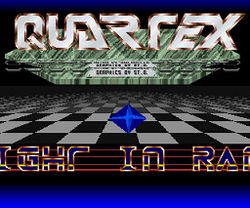
A crack intro, also known as a cracktro, loader, or just intro, is a small introduction sequence added to cracked software. It aims to inform the user which "cracking crew" or individual cracker removed the software's copy protection and distributed the crack.

Demogroups are teams of demosceners, who make computer based audio-visual works of art known as demos. Demogroups form a subculture collectively known as the demoscene.

The demoscene is an international computer art subculture focused on producing demos: self-contained, sometimes extremely small, computer programs that produce audiovisual presentations. The purpose of a demo is to show off programming, visual art, and musical skills. Demos and other demoscene productions are shared, voted on and released online at festivals known as demoparties.

Future Crew was a Finnish demogroup that created PC demos and software, active mostly between 1987 and 1994.
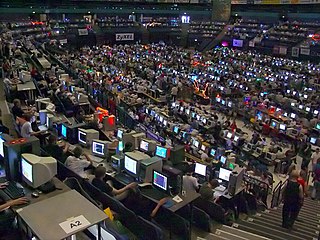
The Assembly demoparty is an annual demoscene and gaming event in Finland. It is the biggest and the longest standing demoscene party. The Summer event takes place every year at Messukeskus in Helsinki, between late July and early August, and lasts three to four days. The 2020 edition was held online.

Catacomb 3-D is a first-person shooter video game, the third in the Catacomb series, the first of which to feature 3D computer graphics. It was developed by id Software and originally published by Softdisk under the Gamer's Edge label, released in November 1991. The player takes control of the high wizard Petton Everhail, descending into the catacombs of the Towne Cemetery to defeat the evil lich Nemesis and rescue his friend Grelminar.
Gustaf Grefberg is a Swedish musician. As part of the demoscene, he is known under the artist name Lizardking, and much of his production is tracker music. He is or has been a member of the demo groups Alcatraz, The Silents, Razor 1911, The Black Lotus and Triton. He and Joakim Falk invented a musical style called Doskpop and he released various music disks such as "Doskpop The Compilation" or "Memorial Songs 1+2" which feature many tracks in this style. He also took part in projects such as Merregnon and the Symphonic Game Music Concert-series in Leipzig, Germany.

FastTracker 2 is a music tracker created by Fredrik "Mr. H" Huss and Magnus "Vogue" Högdahl, two members of the demogroup Triton who set about releasing their own tracker after breaking into the scene in 1992 and winning several demo competitions. The source code of FastTracker 2 is written in Pascal using Borland Pascal 7 and TASM. The program works natively under MS-DOS.

Second Reality is an IBM PC compatible demo created by the Finnish demogroup Future Crew. It debuted at the Assembly 1993 demoparty on July 30, 1993, where it was entered into the PC demo competition, and finished in first place with its demonstration of 2D and 3D computer graphics rendering. The demo was released to the public in October 1993. It is considered to be one of the best demos created during the early 1990s on the PC; in 1999 Slashdot voted it one of the "Top 10 Hacks of All Time". Its source code was released in a GitHub repository as public domain software using the Unlicense on the 20th anniversary of the release on 1 August 2013.

Module file is a family of music file formats originating from the MOD file format on Amiga systems used in the late 1980s. Those who produce these files and listen to them form the worldwide MOD scene, a part of the demoscene subculture.
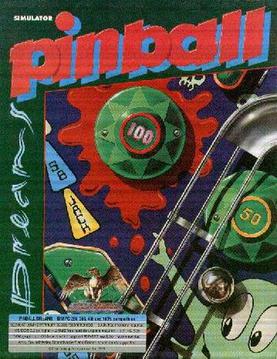
Pinball Dreams is a pinball simulation video game developed by Digital Illusions and originally released for the Amiga in 1992. It spawned several sequels, including Pinball Fantasies and Pinball Illusions. The MS-DOS port was digitally released by Rebellion Developments along with its sequel and Pinball Mania on February 22, 2011 on GOG.com with support for Microsoft Windows. It received an OS X build on April 23, 2013; and a Linux build on August 19, 2014.
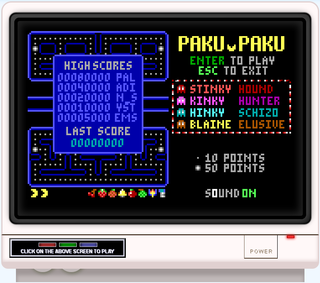
A personal computer game, also known as a computer game or abbreviated PC game, is a video game played on a personal computer (PC).
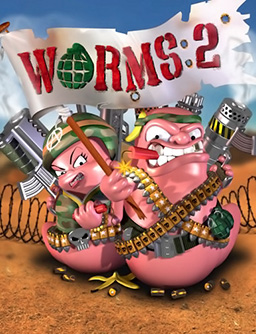
Worms 2 is a 1997 artillery tactical game developed and published by Team17 and released for Windows. It is part of the Worms series and a sequel to the 1995 game Worms. As with the first game, players control their team of worms in combat against each other, using a wide collection of rockets, grenades, firearms, explosives, and air strikes, some eclectic and others bizarre. Also as with the first game, the objective is to eliminate all opposing worms and become the sole surviving team.

The demo effect is a name for computer-based real-time visual effects found in demos created by the demoscene.
The ZX Spectrum's software library was very diverse. While the majority of the software produced for the system was video games, others included programming language implementations, Sinclair BASIC extensions, databases, word processors, spread sheets, drawing and painting tools, and 3D modelling tools.

In the computer programming, vector slime refers to a class of visual effects achieved by procedural deformation of geometric shapes. The techniques appear in programming demos.
Scavenger was a video game publisher that worked closely with GT Interactive. SCAVENGER Based in Los Angeles, the company was unique in that most of its graphic specialists were members of the Amiga demoscene, which demonstrated that utilizing the potential of an underground talent pool of highly skilled self-taught coders, designers and musicians could be a viable business model.
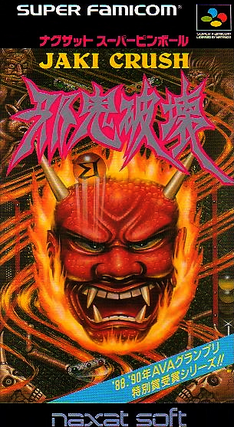
Jaki Crush is a pinball video game developed by Compile and published by NAXAT Soft. Jaki Crush was released exclusively in Japan for the Super Famicom in 1992. The game is the third in the Crush Pinball series, and was preceded by Alien Crush and Devil's Crush on the TurboGrafx-16.

Aleksi Eeben, born Antti Aleksi Mikkonen, is a Finnish composer, sound designer, musician and programmer. He is best known for his musical contributions to the demoscene under the alias Heatbeat, where he has composed hundreds of modules using music tracker software and developed his own tools. He has also composed for video games, and was employed as a sound designer at Nokia between 2002 and 2015, creating many ringtones and sounds. His brother is Konsta Mikkonen, also a demoscene musician and dance producer known under the alias Muffler.










